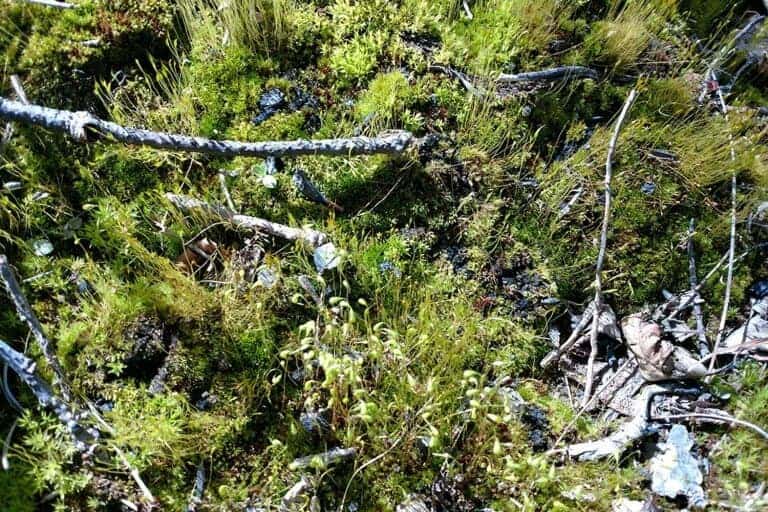When a wildfire obliterates a forest, the first life to rise from the ashes is usually a fungus—one of several species that cannot complete its life cycle without fire. How do pyrophilous (fire-loving) fungi survive, sometimes for decades, between fires?
A new study published in Fungal Ecology by researchers from UT and the University of Illinois finds that some of these fungi hide out in the tissues of mosses and lichens.
The study was part of a larger ongoing project by a team of UT mycology researchers including Karen Hughes, Brandon Matheny, and Ronald Petersen, all faculty members in the Department of Ecology and Evolutionary Biology. They have been studying the changes in the Great Smoky Mountains National Park fungus population since the devastating 2016 wildfire.
“We have this specific group of fungi that we see after a fire; they never occur before a fire,” said study co-author Andrew Miller, with the University of Illinois. “You’re only going to see the fruiting bodies—what most people recognize as a mushroom—after a fire.”

There are several hypotheses to explain where pyrophilous fungi live when they’re not reproductively active, Miller said. Some think the spores drift into a newly burned zone from elsewhere, but how those spores could develop in the absence of fire isn’t clear. Some suggest the fungus is present in the soil, either as a spore or a storage organ that somehow lasts for decades between fires and isn’t consumed by fire.
The team made an unexpected finding.
“The pyrophilous fungi that we found had never been documented for the Smokies before this, in spite of focused collecting by three generations of University of Tennessee mycologists,” said Hughes. “Fire has been repressed in the Smokies for 100 years, so where were these fungi hiding? For one pyrophilous species, it seems to exist inside mosses and lichens.”
The team collected mosses, lichens, and soil samples from burned and unburned areas in and around the Great Smoky Mountains National Park after the 2016 wildfire.
To determine if the fungi were inside the mosses and lichens rather than riding along on their surfaces, the researchers disinfected the moss and lichen samples before testing their innards to see if any fungi were inside.
The team found DNA from pyrophilous fungi inside the surface-sterilized mosses and lichens from burned and unburned areas. They also found DNA from pyrophilous fungi in the soils inside and outside the burn area. That latter discovery is interesting, Miller said, since pyrophilous fungi do not fruit outside a burn zone. The presence of their DNA there might suggest they’re persisting in the soil as fire-resistant spores.
Another possibility is that some of the fungal spores from the burned areas drifted into the unburned zones, leaving a DNA “signature” in the soil, Hughes said. The DNA might persist there longer than the spores could survive in the soil, she said.
“I see the moss or lichen as a protective capsule that gets burned away in a fire and the fungus is not severely harmed,” said Daniel Raudabaugh, a postdoctoral scientist with the University of Illinois. “It will burn that outer coating off, and the fungus falls onto the soil and then starts growing.”
The researchers say there is more to learn about how the fungi persist in the environment.
“There are some things that we still don’t understand, such as how pyrophilous fungi live for decades inside mosses and lichens between fire events,” Matheny said. “However, evidence suggests that these fungi have taken up residence inside these other organisms on the forest floor, tree trunks, or the tree canopy, which has contributed to their lack of detection by traditional means.”
The National Science Foundation supported this work.


